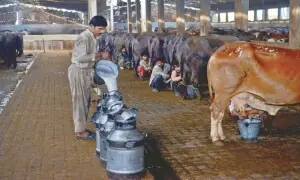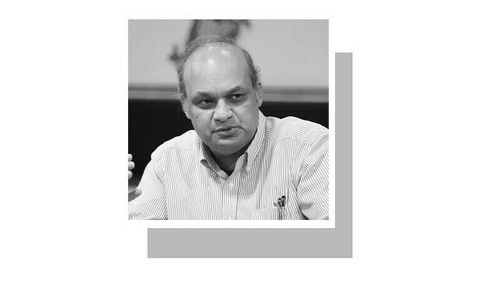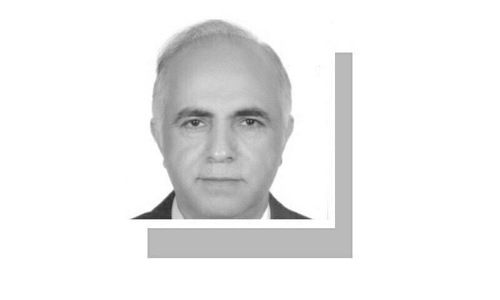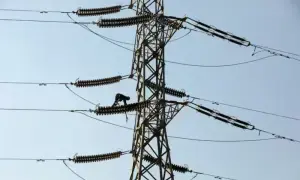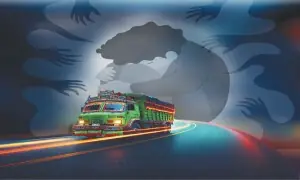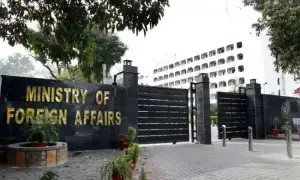THE wind howls through the abandoned mud huts of Kotanay Wala, a once-thriving village just 12km from the historic Derawar Fort. Just a month ago, around 100 families lived here.
But today, the only signs of life are the cattle footprints in the dust, as the worst water crisis in years has forced a mass exodus from the desert.
Communities across the 26,000-sq-km expanse of south Punjab’s Cholistan Desert are facing acute water shortages following a season of below-average rainfall.
For generations, around 1,900 tobas, ponds and kunds — natural rain-fed reservoirs — have served as vital lifelines for nomadic families and their livestock. Each toba historically supported 80 to 100 households. But most began drying up one or two months earlier than usual this year.
As water sources vanish and government aid falters, Cholistan residents migrate in search of survival
With no rain and government-run water supply schemes either broken or under maintenance, families have begun migrating towards urban centres or Derawar Fort, where a limited government water supply still functions, albeit unreliably.
During a recent visit, the houses of nomads could be seen lying vacant in different localities, including Mamo Wali, Charhi and Thhar. Their cattle, including camels and cows, were roaming in the desert in search of food and water.
As the drought hit, the desert turned barren — no grass in sight, only scattered green shrubs clinging to the dry earth.
‘No choice but to leave’
“Camels can survive a week or two without water, but sheep and cows cannot,” said Mama Nawaz, a 100-year-old resident widely respected in the community.
“Every drought, we lose more of our animals and, with them, our ability to feed our children.”
Locals say that even near Derawar Fort, the situation is dire. Only one functioning water bowser is available, and it often suffers from mechanical issues. Residents must fund repairs themselves and pay for fuel to transport water.
“We had no choice but to leave,” said Hameed, a Kotanay Wala resident, pointing to the cracked earth where water once pooled. “We marked our cattle and let them roam. There was no water, and no help came.”
Residents also link the water shortage in the government’s supply line to mismanagement and corruption. According to multiple accounts, politically influential landowners near Derawar Fort have diverted public water supplies to their private farmhouses, filling their own reservoirs while government pipes run dry.
A local water management official, speaking on condition of anonymity, told Dawn that powerful individuals use their influence to tap into government water lines. “We can’t do anything,” he said.
One resident claimed that people had to pay bribes to the Cholistan Development Authority (CDA) officials just to get water bowsers.
Further into the desert, a water pipeline intended for residents of Bijnot Fort is broken nearly 50 kilometres short of the fort, leaving thousands of people without water. “Even our last wells will dry up if it isn’t fixed soon,” said villager Siddique.
He said he contacted CDA officials a week ago to request water for his livestock, but was told the bowser was out of service. He was forced to relocate his animals to the Qasaiy Wala toba.
CDA official Imtiaz Lashari confirmed that many tobas had dried but claimed that some ponds and kunds still held water. He attributed seasonal migration to both drought and wheat harvesting, saying it’s a centuries-old pattern for Cholistani nomads to move to urban areas for labour at the end of March.
Water sources drying up
Anthropologist Moazam Khan Durrani told Dawn that Cholistan’s natural water sources were rapidly drying up due to insufficient rainfall.
However, he said the crisis facing nomadic communities had been worsened by new settlements and land allotments in the region, often granted to influential individuals.
Mr Durrani explained that in the past, nomads would move with their livestock towards riverbanks, such as those of the Sutlej and Indus, to access water and remain there until the monsoon. Now, he said, they are barred from reaching the rivers as farmlands have taken over traditional grazing routes, and one of the key rivers, the Sutlej, has completely dried up.
Besides, canal systems introduced by successive governments have compounded the problem. As settlers encroach on these lands and begin cultivation, what were once natural grazing pastures for livestock have been lost.
The government has acknowledged the worsening situation. Provincial Disaster Management Authority (PDMA) Director General Irfan Ali Kathia said it is a “top priority” to provide water to Cholistan.
A recent meeting in Bahawalpur outlined relief measures, including a Rs40 million fund, 10 water bowsers with 12,500-litre capacity each, and 2,000 jerry cans for water transport.
Bahawalpur Deputy Commissioner Dr Farhan Farooq told Dawn that Rescue 1122 teams would lead emergency efforts, stating that water would be delivered to newly built cement reservoirs. “We are fully prepared to deal with the drought. No one will be left behind,” he said.
However, residents remain sceptical. “We hear promises every year,” said Mama Nawaz, the centenarian resident. “But when the heatwave comes, will the help arrive in time?”
Published in Dawn, April 21st, 2025












